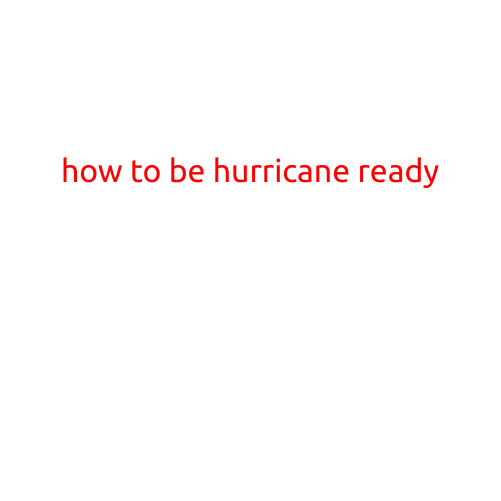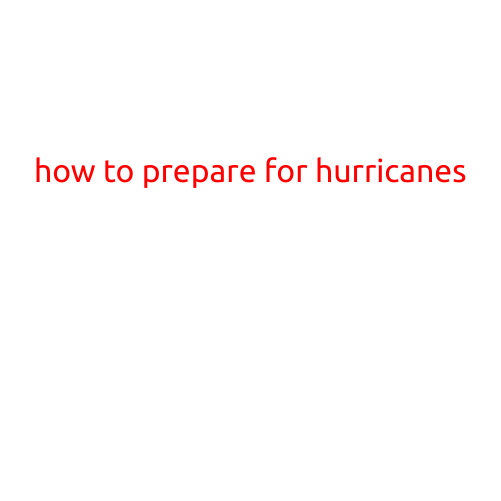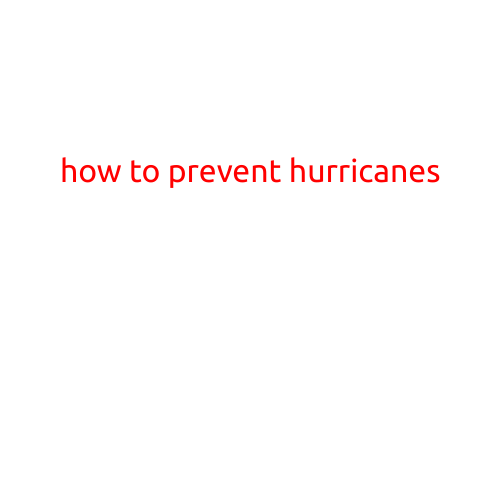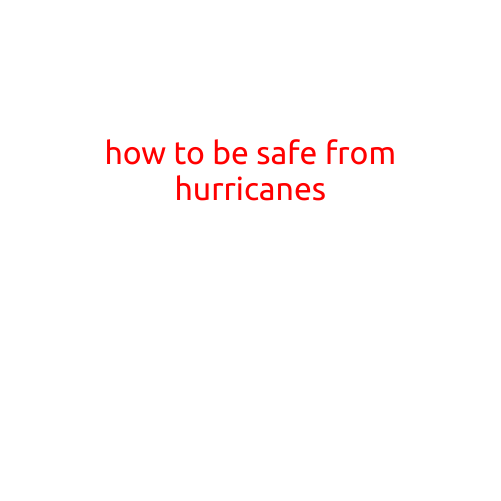
How to be Hurricane Ready: A Comprehensive Guide
Hurricanes are powerful storms that can cause catastrophic damage to homes, infrastructure, and communities. As the Atlantic hurricane season begins, it’s essential to be prepared to minimize the impact of a hurricane on your life. In this article, we’ll provide you with a comprehensive guide on how to be hurricane ready, including essential steps to take before, during, and after a hurricane.
Before a Hurricane: Preparation is Key
- Create a Hurricane Evacuation Plan: Identify safe zones in your area, such as public shelters or friends’ and family members’ homes. Develop a plan for getting there and for communicating with family members.
- Stock an Emergency Kit: Assemble a kit with essential items, including:
- Water (at least 1 gallon per person per day)
- Non-perishable food
- Flashlights and batteries
- First aid kit
- Battery-powered radio and/or a NOAA Weather Radio
- Extra cash and important documents (e.g., insurance policies, identification)
- Charged cell phone and backup power source (e.g., portable charger)
- Install Storm Shutters or Impact-Resistant Windows: Invest in storm shutters or impact-resistant windows to protect your home from wind-borne debris.
- Trim Trees and Shrubs: Trim trees and shrubs to reduce damage from branches and debris.
- Fill Up Gas Tanks and Cars: Fill up your gas tank and ensure your car is in good condition in case you need to evacuate.
During a Hurricane: Staying Safe
- Follow Evacuation Orders: If ordered to evacuate, do so immediately.
- Stay Informed: Monitor local news and weather reports for updates on the storm’s location and severity.
- Stay Indoors: Avoid traveling and stay indoors if possible.
- Unplug Electronics: Unplug sensitive electronics and appliances to protect them from power surges.
- Stay Away from Windows: Move to the center of the room, away from windows and doors, in case of a storm surge.
After a Hurricane: Assessing and Recovering
- Wait for the All-Clear: Wait for official word from authorities before venturing out to assess damage and clean up.
- Assess Damage: Take photos and document damage to buildings, structures, and personal property for insurance claims.
- Practice Safety: Be cautious when using generators, chainsaws, and other equipment, and avoid downed power lines.
- Portable Generators: Use a portable generator outdoors, away from windows and doors, and never use it indoors.
- Contact Insurance Company: Report damages to your insurance company as soon as possible.
- Seek Assistance: If you’re in need of food, water, or shelter, contact local authorities or non-profit organizations for assistance.
Additional Tips
- Stay Informed: Register for emergency alerts from your local government or weather service to stay up-to-date on storm advisories and warnings.
- Charge Your Devices: Charge your phone, laptop, and other devices in case the power goes out.
- Have a Plan for Pets: If you have pets, make sure you have a plan for their care and safety during the storm.
- Consider Flood Insurance: Even if you’re not in a flood-prone area, consider purchasing flood insurance to protect your property.
By following these essential steps, you’ll be well-prepared to face a hurricane and minimize the impact on your life. Remember, preparation is key to staying safe and recovering quickly from a hurricane.





